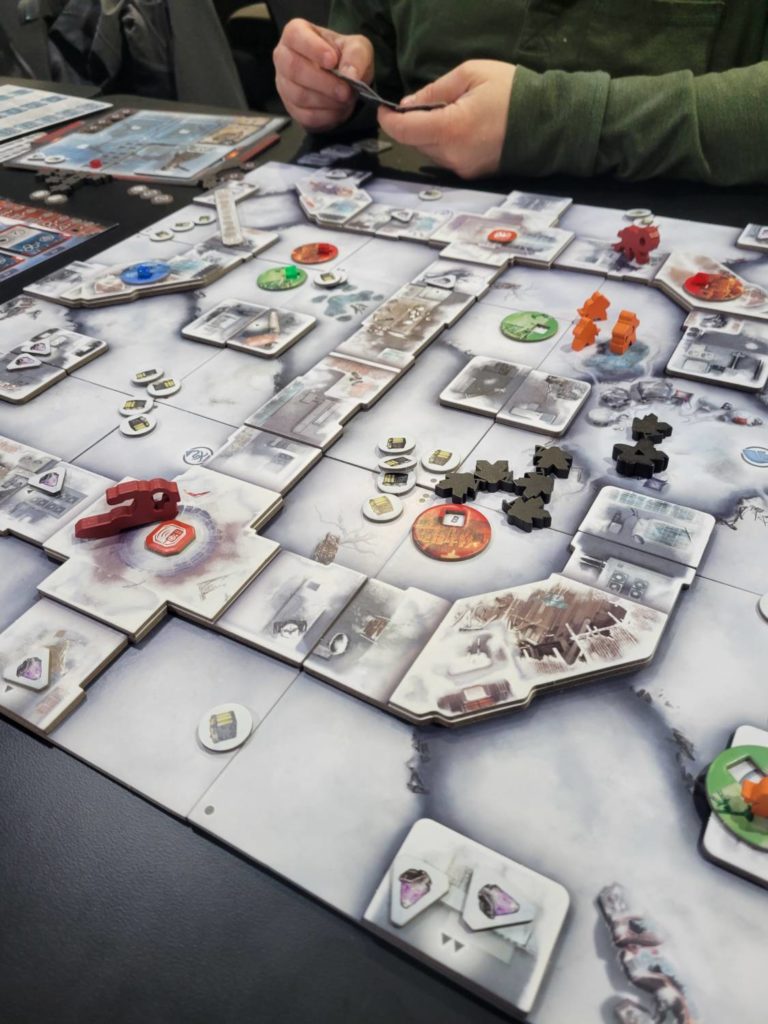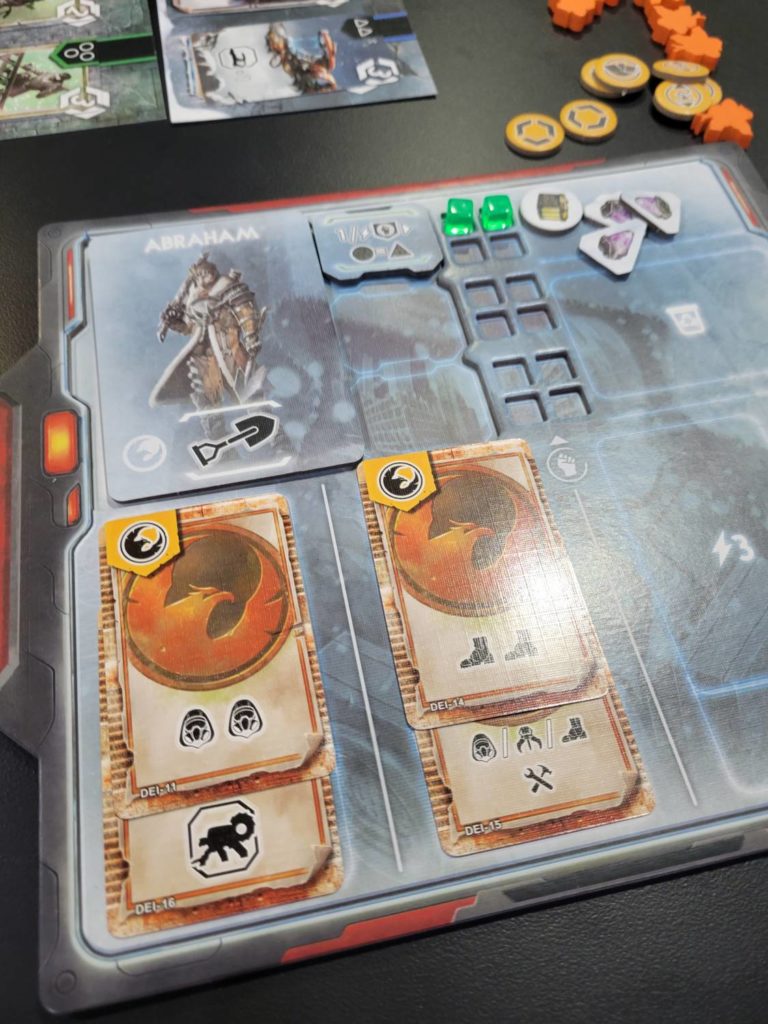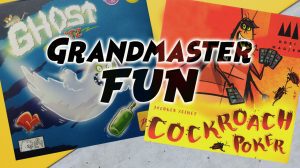There’s nothing more appealing than a good map, and few things are as disappointing as a map that doesn’t measure up to its potential. I’m happy to say that DEI lives up to the promise of its very cool map.
It’s incontestable that the battle royale has made a splash in the world of video games, and there have been attempts to replicate the formula into board game form. For the unfamiliar, battle royale games are typically a first-person shooter where a player is dropped into a huge landscape without any weapons or tools, and needs to run around and collect weapons, ammo, and equipment to be able to survive the other players. On top of this, the map is constantly shrinking, bringing players into more and more conflict. These games, in spite of their huge maps, often feel claustrophobic and frantic at the same time, and every decision you make matters.

Now, how could a real-time experience like this possibly be translated into board game form? I’m not sure if DEI’s designer, Tommaso Battista, intended for this, but he’s made perhaps the best battle royale-adjacent board game I’ve encountered so far. I think this is in part because the game tightly focuses players on a specific set of feelings, rather than attempting to replicate the mechanisms of the battle royale. Playing DEI, you’ll feel claustrophobic and desperate for resources, and get to feel the elation of finding a new cool power and getting to use it.
A DEI match is composed of square tiles that are three-dimensional. You can arrange them in a large square, or make a shape of your choosing, but setup is a minigame unto itself. At the junctions of various pieces of terrain, the two game resources are distributed in varying amounts. Players select a faction to play, which brings in shared pieces called drones that are unique to each faction. All players start in two start zones, and then the fun begins.
The object of the game is to accomplish various objectives across four rounds. Each round, players get three turns, and at the end of their third turn, they have the opportunity to score one of the objectives for the game. These objectives range from collecting specific types of resources or controlling different areas of the board in different ways. Each objective has two parts, and each objective is associated with one of the rounds of the game. When you score, you are allowed to score any objective you haven’t scored yet, but if you do one from a previous round, you score fewer points.

Now, how does the game actually play? Each turn, you play two cards (there is a variant for simultaneous planning and playing that I do not recommend), resolving each of your cards in turn. Each card has icons on it representing different actions in the game. The actions are simple, easy to understand, and quick to explain. You’re moving dudes around the 3D board, collecting resources, building buildings (more on this in a moment), or buying cards from one of 4 different markets.
Turns are snappy, and at the end of your second turn, if you control the right combination of “control points,” which are board areas that give you one of three different colored cubes, you can gain one of three feats that you get at the beginning of the game. Each feat gives you special powers, and like the actions, they’re easy to understand and fun to use. One of my opponents had a power that gave him access to underground tunnels, which basically let him move his pieces around the board at will.
The board! What a board! It’s three-dimensional, as I’ve already mentioned, and that could be cumbersome and obnoxious, but in this case, it works well. Game regions are easy to see, and are two-level, and pieces cannot travel between levels without elevators. There are neutral ones for everyone, and each faction can build its own that only they can use. On top of this, players can build bridges across roofs that enable them to travel faster, and build refuges, which give them new areas to build units.
The markets add additional differentiation. Each one has variable costs and requires you to control different areas of the board (potentially) to get the cards you want. You have a set of cards, you play six of them over a round, and then you get them all back at the end of the round—unless you decide to buy a new card, in which case you permanently lose access to the card you used to buy it. This keeps the hand management puzzle in control.

Drones are a unit that each faction has individual control over until another player buys a drone control card, which are shuffled into the main decks. They’re more powerful units that can break many of the rules of the game, and on top of this, one of the drones features the only “remove another player’s pieces” power in the base game (I cannot speak for the expansions).
That’s right! DEI is a majorities game, meaning most of the time you’re going to be sharing space and grubbing for resources, rather than blowing each other up. This is truly the best part of the game. The premise is that you’re groups of survivors overseen by some elite ruling class that is making you hunt and gather for sport, so while the other players are your opponents, you don’t want to destroy them–you just want to get to the goodies first.
What this results in is a quick-playing scramble for resources, with a map that you can bend to your will and change dynamically based on the needs of players. I admit that I approached the game with a high amount of skepticism, but now, I’m looking forward to the upcoming Kickstarter reprint. Clearly a snowy labor of love that hits the spot.











I really like your reviews. This is a great site!